|
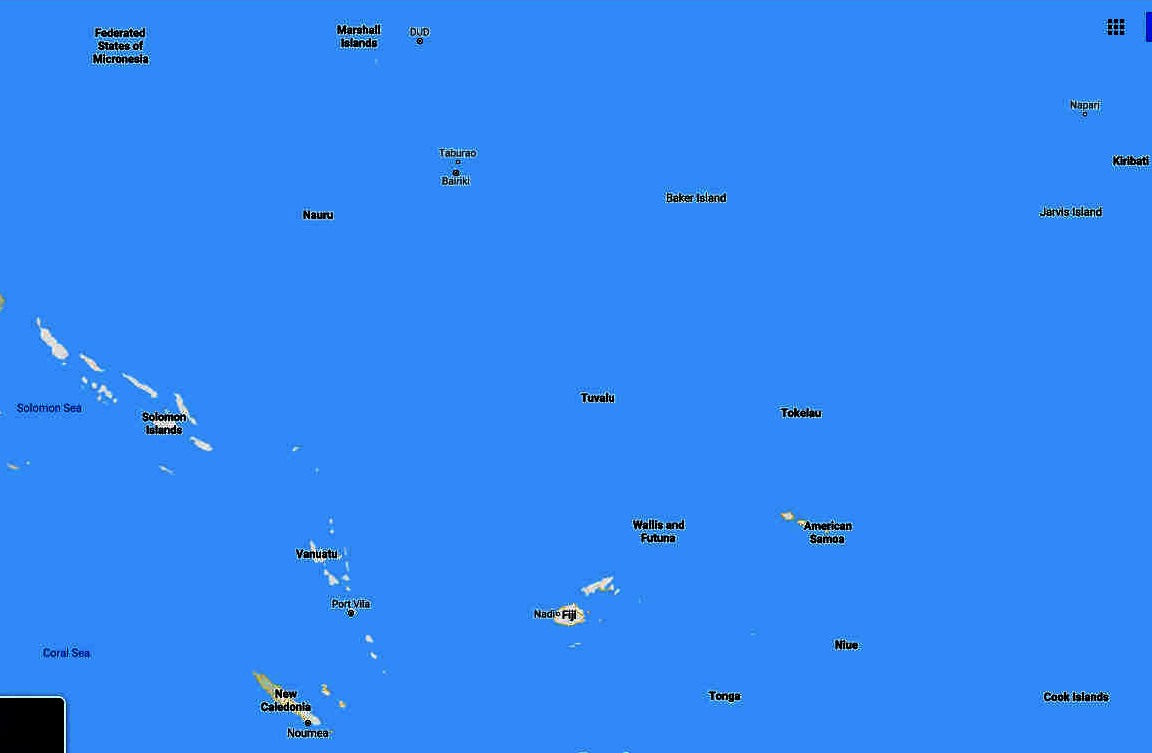
Map
of the Pacific Islands, showing the partner governments to a Blue Bond,
that is to enable the stability of transportation and move away from
fossil fuels.
The Marshall Islands, officially the Republic of the Marshall Islands is an island country and a United States associated state near the equator in the
Pacific
Ocean, slightly west of the International Date Line. Geographically, the country is part of the larger island group of Micronesia. The country's
population of 53,158 people (at the 2011 Census) is spread out over 29 coral atolls, comprising 1,156 individual islands and islets. The capital and largest city is Majuro.
The islands share maritime boundaries with the Federated States of Micronesia to the west, Wake Island to the
north, Kiribati to the southeast, and Nauru to the south. About 52.3% of Marshall Islanders (27,797 at the 2011 Census) live on Majuro. Data from the
United Nations indicates an estimated population in 2016 of 53,066. In 2016, 73.3% of the population were defined as being "urban". The UN also indicates a
population density of 295 per km2 (765 people per mi2) and its projected 2020 population is 53,263.
Micronesian colonists reached the Marshall Islands using canoes circa 2nd millennium BC, with interisland navigation made possible using traditional stick charts. They eventually settled
here. Islands in the archipelago were first explored by Europeans in the 1520s, starting with Ferdinand Magellan, a Portuguese explorer in the service of
Spain, Juan Sebastián Elcano and Miguel de Saavedra. Spanish explorer Alonso de Salazar reported sighting an atoll in August 1526. Other expeditions by Spanish and English ships followed. The islands derive their name from John Marshall, who visited in 1788. The islands were historically known by the inhabitants as "jolet jen Anij" (Gifts from God).
Spain claimed the islands in 1592, and the European powers recognized its sovereignty over the islands in 1874. They had been part of the Spanish East Indies formally since 1528. Later, Spain sold some of the islands to the German Empire in 1885, and they became part of
German New Guinea that year, run by the trading companies doing business in the islands, particularly the Jaluit Company. In World War I the Empire of Japan occupied the Marshall Islands, which in 1920, the League of Nations combined with other former German territories to form the South Pacific Mandate. During World War II, the
United States took control of the islands in the Gilbert and Marshall Islands campaign in 1944. Nuclear testing began on Bikini Atoll in 1946 and concluded in 1958.
The US government formed the Congress of Micronesia in 1965, a plan for increased self-governance of Pacific islands. The Trust Territory of the Pacific Islands in 1979 provided independence to the Marshall Islands, whose constitution and president (Amata Kabua) were formally recognized by the US. Full sovereignty or self-government was achieved in a Compact of Free Association with the United States. Marshall Islands has been a member of the Pacific Community (SPC) since 1983 and a
United Nations member state since 1991. Politically, the Marshall Islands is a presidential republic in free association with the United States, with the US providing defense, subsidies, and access to U.S.-based agencies such as the Federal Communications Commission and the United States Postal Service. With few natural resources, the islands' wealth is based on a service economy, as well as some
fishing and agriculture; aid from the United States represents a large percentage of the islands' gross domestic product. The country uses the United States dollar as its currency. In 2018, it also announced plans for a new cryptocurrency to be used as legal tender.
The majority of the citizens of the Republic of Marshall Islands, formed in 1982, are of Marshallese descent, though there are small numbers of immigrants from the United States,
China, Philippines, and other Pacific islands. The two official languages are Marshallese, which is one of the Malayo-Polynesian languages; and English. Almost the entire population of the islands practices some religion: three-quarters of the country follows either the United Church of Christ – Congregational in the Marshall Islands (UCCCMI) or the Assemblies of God.
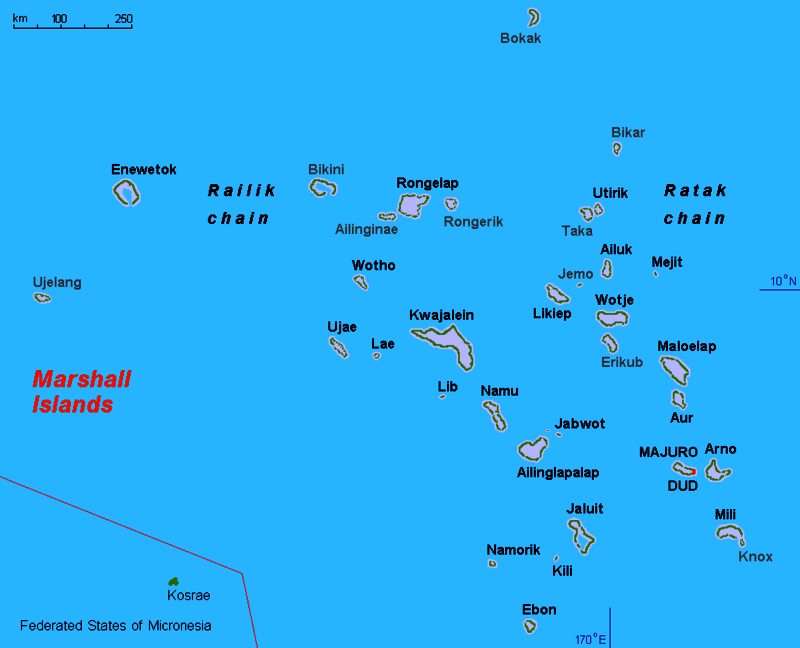
Map
of the Marshall Islands
2019
PACIFIC BLUE SHIPPING PARTNERSHIP
The Pacific
Coalition know as the Pacific Blue Shipping Partnership includes the
Governments of: Fiji,
Marshall, Samoan,
Solomon, Tuvalu and Vanuatu Islands, as announced on Tuesday 24th
September 2019. The Partnership has set an emissions reduction target of
40% by 2030, and full decarbonisation by 2050. There are as yet limited
practical solutions to solve the coalition's aims.
The
region imports 95% of its fossil
fuels. Imported petroleum
accounts for an average of 40% of GDP in Pacific island countries, with
the transport sector the largest fuel user.
In
archipelago states of small island populations spread over vast ocean
distances, sea travel is vital for linking communities and for economic
development. The lack of regular connectivity between islands is a major
constraint on domestic, social and economic development and on
international trade. This represents a challenge that falls within scope
of the Horizon
2020 call for proposal in September 2019.
Dr
Peter Nuttall, a scientific and technical adviser for the Micronesian
Center for Sustainable Transport at the University of the South Pacific,
told the
Guardian that shipping was the “absolute lifeline” of any
Pacific community.
“Without shipping, our economies die, our people can’t survive. In
places like the Solomon Islands or the Marshall Islands, 80% to 90% of
all goods arrive by ship. We have the most expensive shipping in the
world, the longest transport routes, and the worst ships.”
He said the Pacific
was acutely vulnerable to oil shocks, citing examples from remote
Pacific islands where critical services, such as visits by health
professionals, had to be abandoned because fuel prices were too high.
Dr Nuttall said the Pacific “cannot wait for the rest of the world.
We have to bespoke design a Pacific solution if it is going to work, not
leave the Pacific to languish.
We’re
running the biggest risk. The Pacific did nothing to cause climate
change, but we’re about to get smashed by it. What is it we can
practically do to make people’s lives better now? We know the answers,
and we don’t have time to wait.”
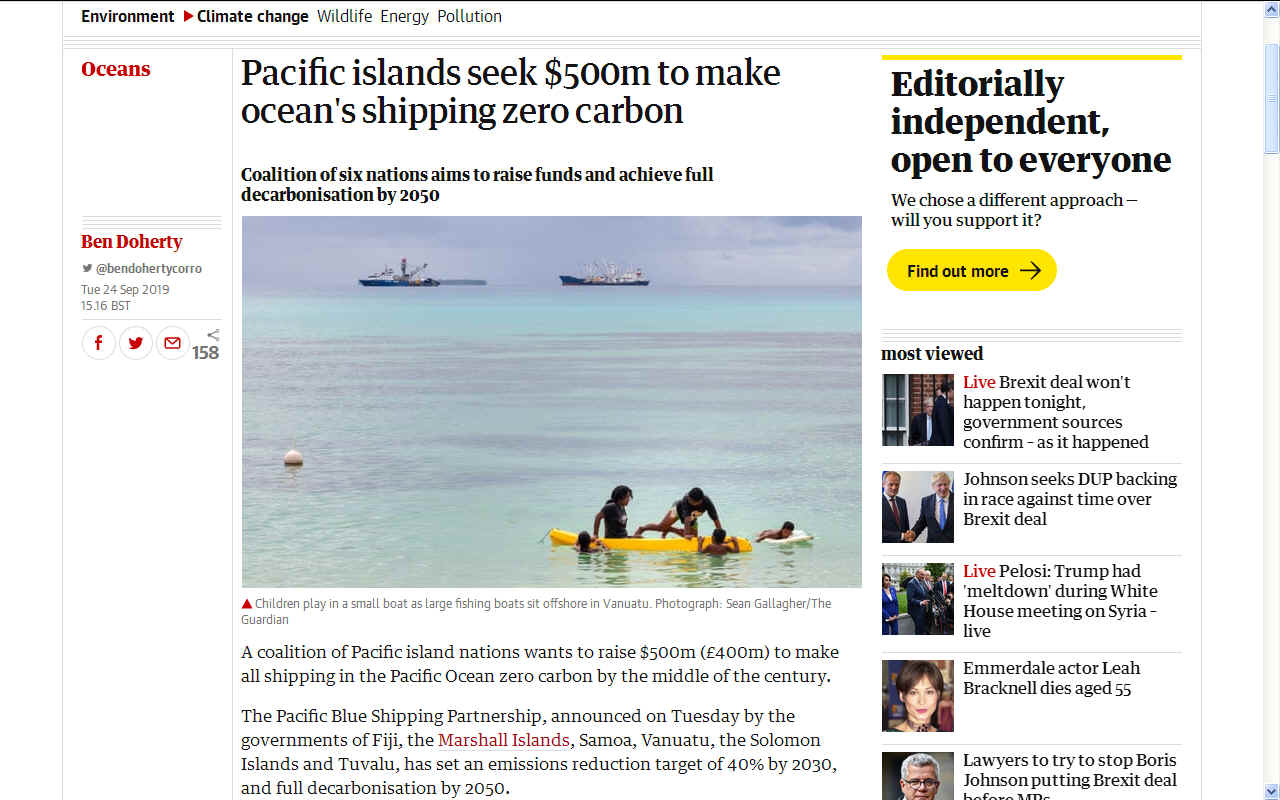
2019
- Pacific Island coalition seeks zero carbon shipping.
In preserving
the Marshall islands natural heritage ..
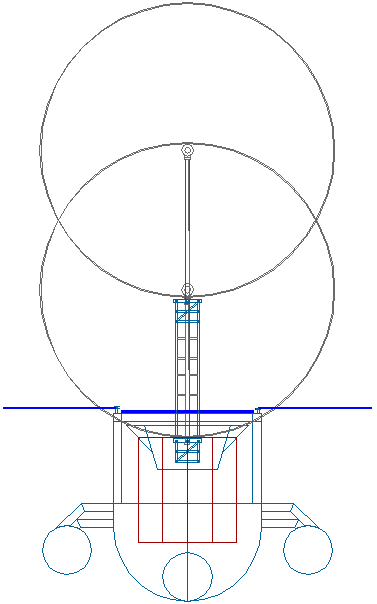
ZEV
- End view of a zero emission container ship that is designed for long
distance runs and payloads of 120 tonnes. Ideal for economical transport
with adding to global warming
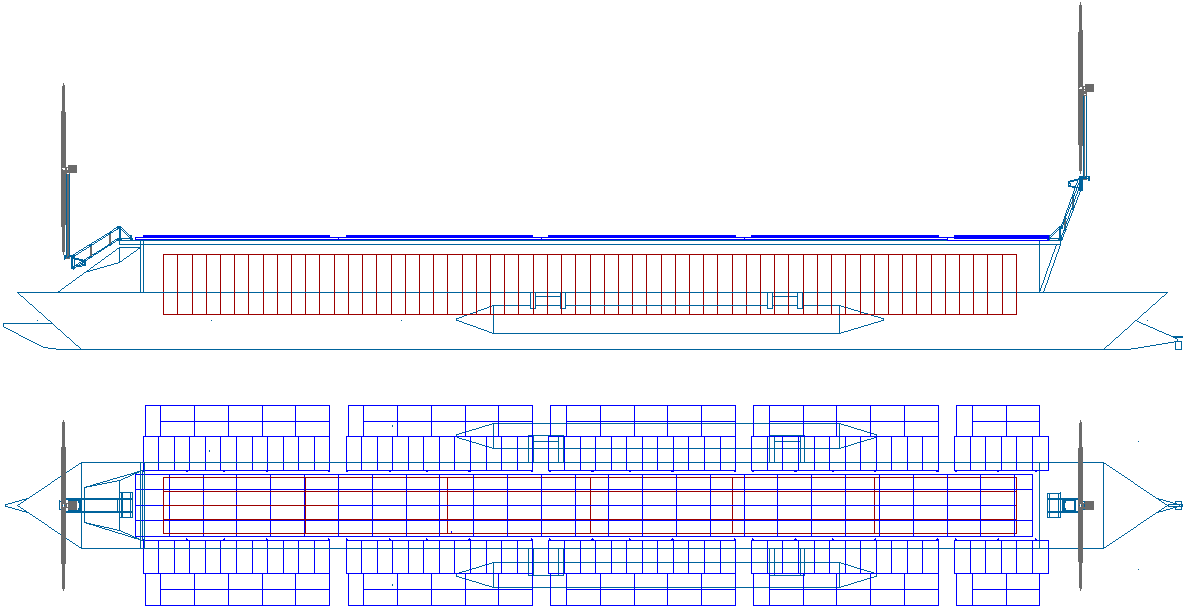
ZEV
- Side and plan views of a zero carbon container ship that is powered
only by the sun and wind. The design features autonomous tracking of the
light and wind energy using computers, to enhance energy harvesting.
LINKS:
|
Adelaide
Aden
- Yemen
Afghanistan
Africa
Alaska
Albania
Algeria
Amazon
Rainforest
Amsterdam
Antarctic
Arctic
North Pole
Argentina
Asia
Athens
Atlantis
- Plato's Lost City
Australia
Austria
Aztecs
- Mexico
Baghdad
Bahamas
Bahrain
Bangladesh
Barbados
Beachy
Head, England
Belgium
Benin
Berlin
Bermuda
Black
Rock Desert
Bohemia
Bolivia
Bonneville
Utah History
Bonneville,
Utah, USA
Brazil
Brighton
- West Pier
British
Columbia
Buckingham
Palace
Bulgaria
Burkina
Faso
Burma
California
Canada
Canary
Islands
Cape
Horn
Cape
Verde
Cape
York - Au
Caribbean
Cayman
Islands
Central
Africa
Chichester
Harbour
Chile
China
Columbo
- Sri Lanka
Columbia
Corfu
Cowes,
Isle of Wight
Croatia
Crooked
Island, Bahamas
Cuba
Cyprus
Czechoslovakia
Darwin
- Australia
Daytona
Beach
Denmark
Eastbounre
Pier, England
Earthquakes
Ecuador
Egypt
Eindhoven
Estonia
Equator
Europe
Falkland
Islands
Falmouth,
Cornwall
Fiji
Finland
France
Galapagos
Islands
Geography
Links
Geography
Mountains
Geography
Records
Geography
Resources
Geography
Statistics
|
Germany
Ghana
Gibraltar
- Links
Greece
Greenland
Guinea
Guinea
Bissau
Hawaii
Holland
the Nertherlands
Hollywood,
California, LA
Hong
Kong
Hungary
Hurricanes
Iceland
India
Indonesia
Links
Iran
Iraq
Ireland
Isle
of Man
Isle
of Wight - The
Needles
Israel
Italy
Ivory
Coast
Jakarta
- Java
Japan
Johannesburg
Jordan
Kent,
England
Kenya
Korea
Kuwait
Kyoto
Lanzarote,
Gran Canaria
Las
Vegas
Lebanon
Liberia
Libya
Liechtenstein
Life
on Earth
Lithuania
London
- Big
Ben
London
Eye
London
Houses
Parliament
London
- Buckingham
Palace
London
- Old
Bailey
London
- Overview
London
- The City
London
- Tower Bridge
London
- Trafalgar
Square
Luxembourg
Madame
Tussauds
Malaysia
Mali
Malta
Marshal
Islands
Mauritania
Maya
Empire - Central
America
Melbourne,
Australia
Middle
East
Melbourne,
Australia
Mexico
Monaco
Morocco
Mountains
Mumbai
Naples-
Italy
National
Geographic
Nepal
New
York
New
Zealand
Niger
Nigeria
North
Africa
Norway
Nova
Scotia
Oceans
and Seas
Oman
Pakistan
Palermo
- Sicily
Palestine
Palma
- Malorca
|
Panama
Canal - Links
Paris
Pendine
Sands
Peru
Philippines
Pisa,
Leaning Tower
Planet
Earth
Poland
Port
Moresby - PNG
Port
Said - Egypt
Portugal
Puerto
Rico
Qatar
Quebec
Rio
de Janeiro
Romania
Rome
Russia
Salt
Lake City
Samoa
Saudi
Arabia
Scandanavia
Scotland
Senegal
Siera
Leone
Singapore
Solomon
Islands
Somalia
South
Africa
South
America
Southampton
Spain
- Espana
Sri
Lanka - Links
Stonehenge
Sudan
Suez
Canal
Sundancer
Holiday Resort
Sussex,
England Index
Sweden
Switzerland
Sydney,
Australia
Syria
Tahiti
- Polynesia - Links
Tahitian
- Men & Women Customs
Taiwan
Thailand
The
Gambia
Togo
Tokyo,
Japan
Tonga
- Polynesia
Toronto
Trinidad
- Lesser Antilles
Trinidad
and Tobago
Tsunami
Tunbridge
Wells, England
Tunisia
Turkey
Tuvalu
Islands
UAE
- United Arab Emirates
UK
Statistics
Ukraine
United
Kingdom
United
Kingdom - Gov
USA
Uruguay
Vanuatu
Islands
Vatican
City
Venezuela
Venice
Vienna
Vietnam
Volcanoes
Volendam
Wales
Washington
D.C.
WAYN
Where Are You Now
Wealden
iron industry
Wendover
West
Africa
World
Peace Supporters
Yemen
Yugoslavia
Zurich
|

Solar
Cola drinkers care about planet
earth
..
Thirst for Life

(330ml
Planet Earth
can)
|





